Varieties of panels and their use in the interior
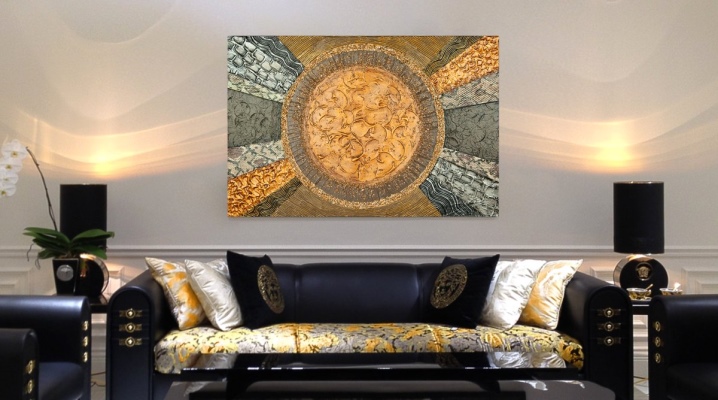
Paradoxically, the rapid growth in the variety of interior design options seen in recent decades does not contribute much to a real increase in the variety of spaces. As in the times of a limited choice of finishing materials, most of humanity prefers a couple of the most popular solutions, which are notable for their low cost with a certain aestheticism and proper durability. However, walls painted or pasted over with even the most exquisite wallpaper are a bit corny. A panel can be an excellent solution to the problem.
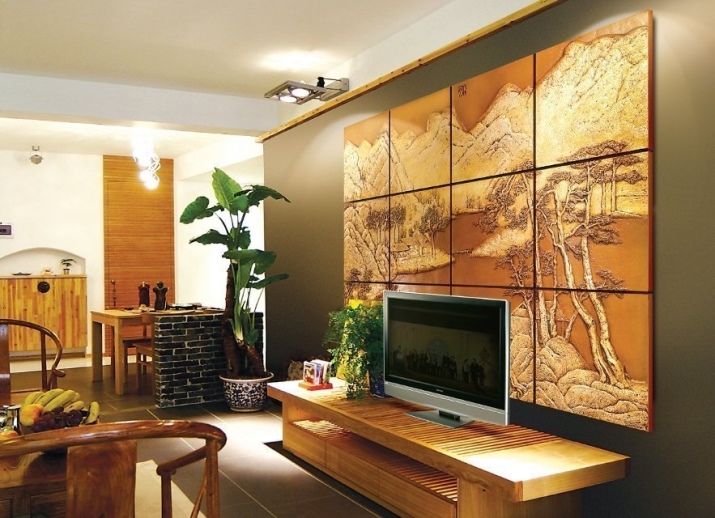
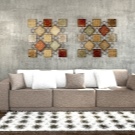
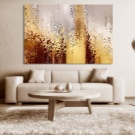
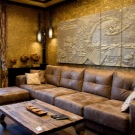
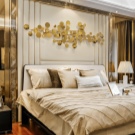
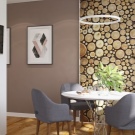
What it is?
In a sense, the panel should not even be called a finishing option, because it can just as well be considered one of the types of art. This is a kind of mosaic or pattern that smoothly flows into a mosaic for greater realism. As a result, a picture can be completely assembled from fragments of one or another material, but it also happens otherwise - a real picture is used as a center object, only the tree depicted on it crawls out of the frame, branches further.
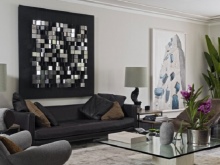
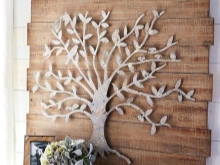
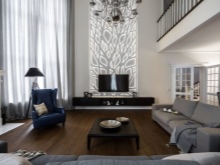
It turns out that the panel is a cross between a drawing, applique and a three-dimensional figure.
Determining the exact proportions of the named components for the entire genre as a whole is problematic, since everything depends on how the creator saw his creation in each individual case.
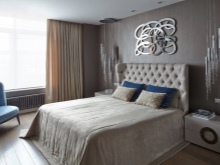
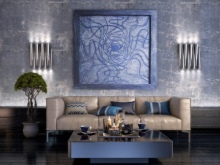
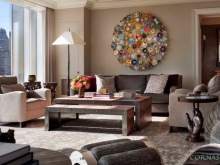
Views
Modern panels can be classified according to a huge number of different criteria. First of all, it is worth clarifying that such a decorative interior decoration today is most often made in a wall version, although earlier panels could be placed not only on the wall, but also on the ceiling and even the floor! The reason why today's samples are predominantly vertical lies on the surface: floor examples should not be embossed if you do not want to constantly stumble, and the volumetric image is always more beautiful and effective.
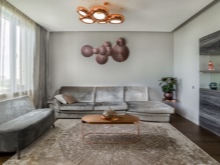
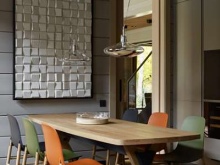
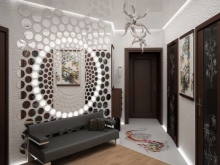
Previously, a panel in each case was a complex manual work, but today the details for it are made from any available materials and in various techniques, for example, quilling, kanzashi, decoupage, felting and so on. However, manufacturers have already realized that for some this is not just an option for decorating their own home, but also an opportunity for self-expression, therefore, self-adhesive modular 3D sets on cardboard can be found on sale, as an option - with a frame for a picture.
This is not so much a building material as it is a product for creativity, but you can either just practice on it or transform your apartment.
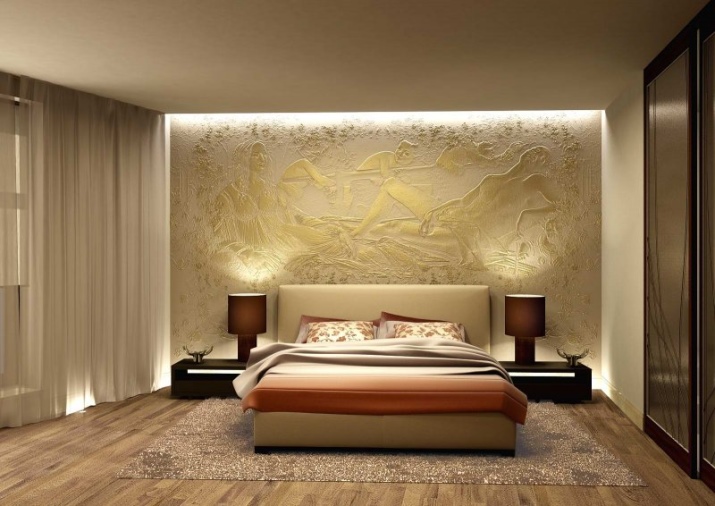
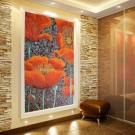
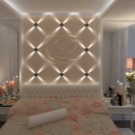
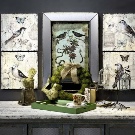
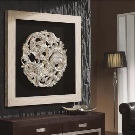
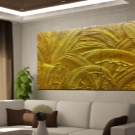
However, most often the panel is classified according to the material from which it is made. There are a lot of options, and each of them is worthy of a more detailed consideration.
Tissue
Fabric panels are good because the vast majority of modern housewives have at least minimal skills in working with such material and can make panels with their own hands. To do this, you don't even have to specially purchase the material, because any old pieces of fabric can be used, from napkins to cut ribbons. There are no strict requirements for the choice of material either - someone makes a craft out of felt, pleasant to the touch, but burlap will do, in fact.
Persevering craftswomen even produce panels knitted from wool, in which each piece of fabric was originally made specifically for wall application.

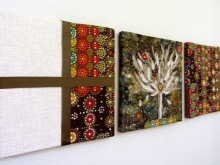
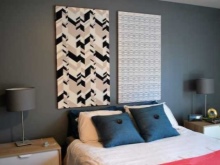
Wooden
If the ladies' favorite material for handicraft is fabric, then the representatives of the sterner sex almost universally know how to work with wood. As in the above example of fabric panels, you can choose two completely opposite tactics. Technically simpler is to assemble a three-dimensional picture from materials that do not require special additional processing, but initially fit the concept - for this role, for example, a vine or branches are suitable, if they are appropriate in the composition. Alternatively, the image can be laid out even from matches.
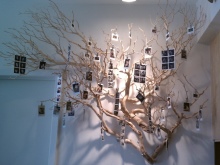
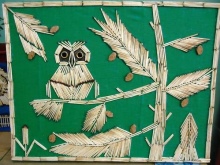
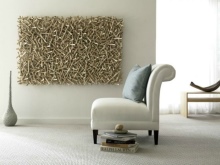
Another tactic involves a much larger amount of work, but on the other hand, the panel will turn out to be more exclusive and chic. We are talking about carved crafts from boards.
This solution has one more advantage - if you make all the necessary parts by hand, you will not have to look for ready-made pieces of wood that could replace the required fragment.
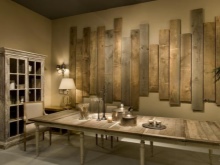
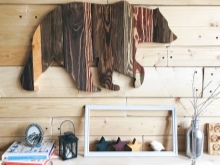

Of stone
You will see full-fledged stone paintings relatively rarely - if we are talking about natural granite or marble, then it is insanely expensive, and it will definitely not work in the handmade version. That's why most of the stone panels are an applique skillfully assembled from small multi-colored pebbles and shells that can always be collected on the banks of water bodies.
Alternatively, there are also sold (and handcrafted) panels made from artificial stone or softer varieties of natural raw materials such as polystone and Himalayan salt.

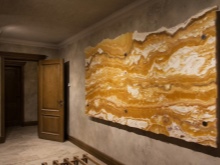

Graphic
This type of panel is still quite rare, but, apparently, this option foresees a bright future and great popularity. The focal point is the painting printed on the canvas. In principle, it can be an ordinary drawing, enclosed in a large-sized photo frame, but then the objects depicted on it seem to crawl out a little outside the confined space. So, the drawn tree continues with a real three-dimensional twig, as well as a rocky hill, partially made up of pebbles.
At the same time, there is an even more advanced version of such panels, when they were originally printed on a 3D printer and have a relief.
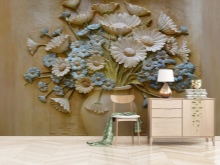
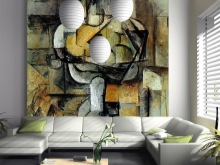
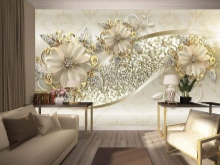
Ceramic
At one time, this type of panel was one of the most popular - once, just thanks to the stucco molding, it was possible to make the picture three-dimensional, while conveying the features of the relief of any three-dimensional objects. Today, it is no longer necessary to be an outstanding genius to be engaged in sculpting from the same plaster, but there are other materials, such as cold porcelain.
Textured plaster can also be used as a consumable. In the latter case, however, it is worth calling the master.
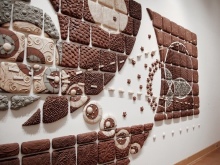
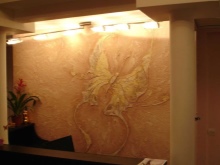
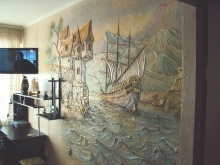
Plastic
When people talk about plastic panels, they usually mean not a set of appliqués from individual parts, but a plastic background, which is only the basis for crafts. Today it will not be difficult to buy a decorative plastic panel depicting a certain natural landscape. By itself, of course, it still does not have the right to be called so loudly, but if you bring the depicted objects outside the two-dimensional frames of the panel with the help of additional details, you will get just a panel.

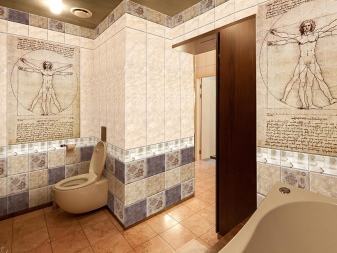
Metallic
Along with stone, metal panels belong to the category of interior decorations that most homeowners cannot do with their own hands. But the forged details of such a craft look extremely advantageous in any interior and will make you perceive the room itself and its owner completely differently, who was not greedy for such an exclusive finish.
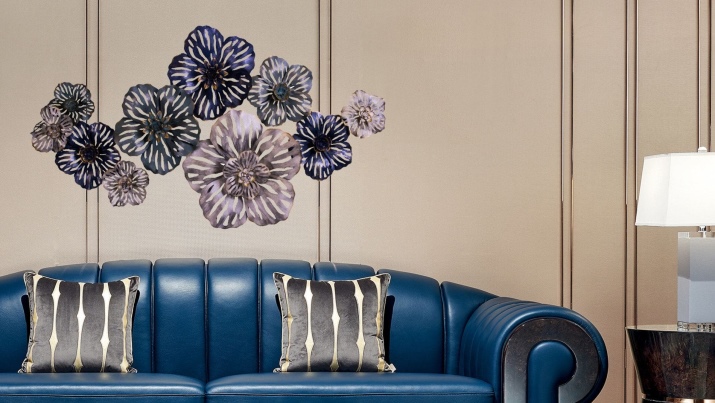
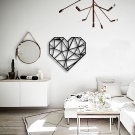
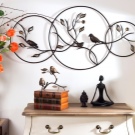
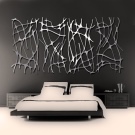
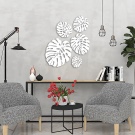
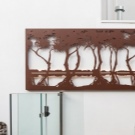
Of glass and mirrors
A glass panel does not always have to have at least some kind of plot, on the contrary - it usually conveys only a certain geometric shape. However, the effect of this is not lost at all - it will be unusual for your guests how unusual the glass is inscribed in the interior. If the master has at hand from somewhere a large number of pieces of multi-colored glass, then you can go even further and still try to type a picture.
That being said, glass crafts are highly prized for being indifferent to wear and tear from time to time.
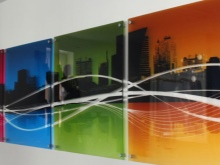

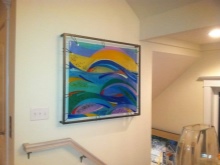
Mirror solutions are so far even less common than glass ones, but they are very relevant in a situation where the room does not have enough light. Plus, because of the high amount of glare they create, a room can look different every time, which means it can be a win-win for small but tastefully furnished spaces.
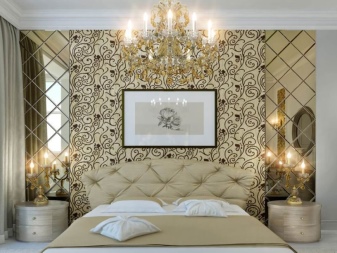
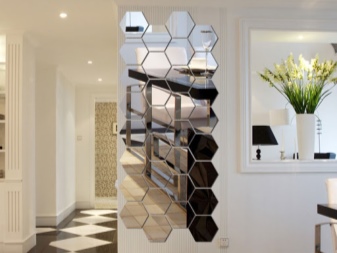
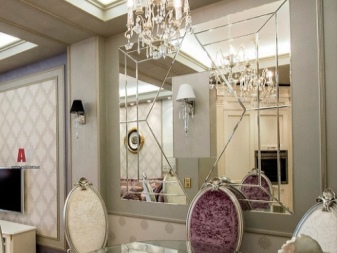
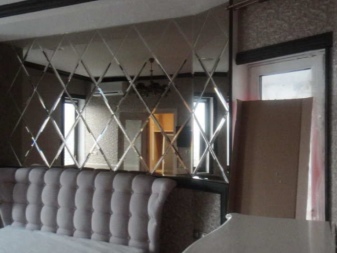
From unusual materials
In their quest to create a truly unique home decoration, modern creative people use the most unexpected materials at hand. For women, as a rule, the floral theme is closest, especially since with the help of straw, dried flowers, leaves and cones, you can compose a very good landscape. You can decorate it with real butterflies, if the owners, of course, do not disdain.
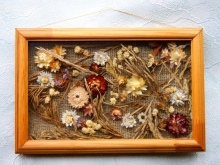

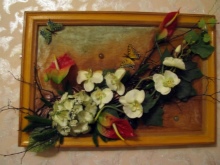
Wherein it is not necessary to exploit the theme of dried flowers - there are other creative ideas. For example, you can type an image from multi-colored beads or balloons. Recently, multi-colored Italian pasta has begun to come into fashion - this is also a good option for creating a wall composition. Finally, no one canceled beer lids, especially since their color scheme can be supplemented with similar lids from any other drinks.
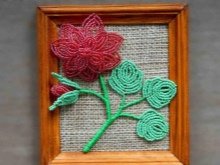
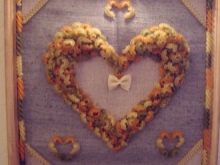
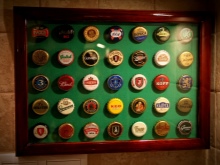
Finally, the panel can be simply sculpted or at least decorated with stucco elements. Men will probably remember the reliable and durable epoxy first of all, but the craft can be made from papier-mâché.
Some people try to make panels even from plasticine, but then we must remember that the simplest children's variety of this material begins to melt in the ordinary summer heat, and we must take something more expensive and complex.
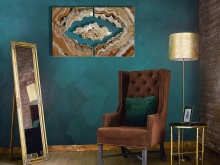
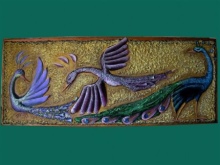
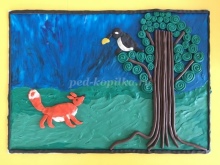
Forms
There are no rigid restrictions on the form for the panel. In many cases, it does not represent any plot drawing at all and is just a geometric figure, therefore it can easily be round, rectangular, rhombic or in the form of a spiral.
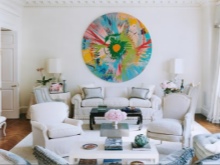
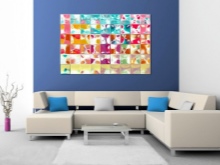
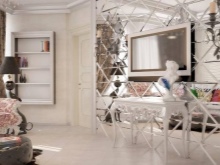
If a picture appears in the center of the panel, then it is completely impossible to clearly describe its form. First, in such cases, the decoration almost always loses its two-dimensionality and becomes three-dimensional. Secondly, even on a plane, individual elements begin to "crawl out" beyond the limits of the photo frames, while such "love of freedom" is not only not reprehensible, but, on the contrary, commendable - it makes the craft unique.
Thus, it is possible and even necessary to experiment with geometry when making panels.

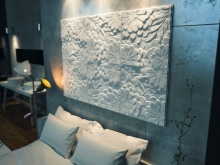
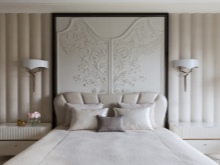
Styles
Professional design services nowadays are not cheap, but it is important to be able to fit a panel into an interior from a stylistic point of view. On the other side, on the Internet, the basic principles of inscribing something into every style have long been described, and even if you do not succeed in a masterpiece the first time, you can at least be proud of the fact that you tried it, and it turned out well.

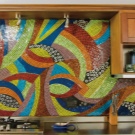
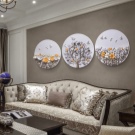

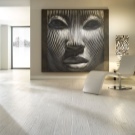

Oriental style
The East is too broad a concept, so it is worth separating the Middle Eastern motives from the Japanese or Chinese ones. In the first case, ceramic tiles or mosaics should be considered as materials, and the color scheme should be chosen mainly in white and blue shades with small splashes of red. The Far East already assumes completely different materials - bamboo, rattan, rice paper or fabric. The color scheme will also be different - white and red for Japan and yellow and red for China.
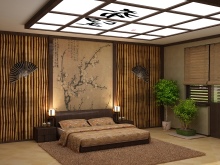
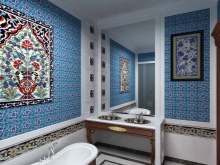
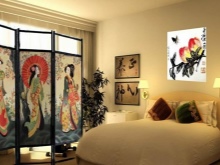
Art Deco
This style has a name "speaking" - it can be translated as "the art of decorating." Simple and tasteful, modest, trivial - these are all characteristics that are not at all inherent in this style.Art Deco requires an emphasized grace, this trend seeks to turn literally everything that comes to hand into a masterpiece. In most cases, it is literally necessary to make sure that the jewelry has a plot - bare geometry is rarely suitable here.
At the same time, it is important to move away from platitudes and focus on something completely original and unique, and general silhouettes are much more important than small details.
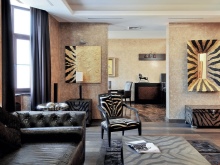
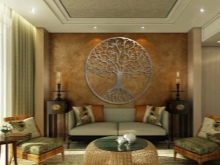

Boho
One of the few still unfinished styles is described as light and casual, homely cozy. Its "signature" materials are various fabrics with abundant use of yarn, wool, floss as additional decoration. Macrame in such an interior will look in its place.
The color scheme is usually cheerful, but without overly acidic tones, in a somewhat subdued performance.
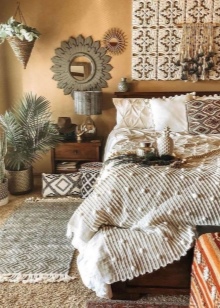
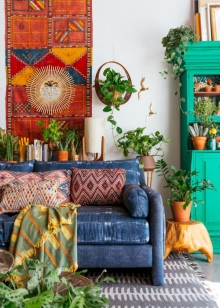
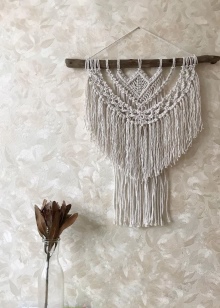
Provence
Strictly speaking, Provence is just one of the varieties of country, but at the same time, this style is characterized by a large number of notes of eco-style. In the interior, you can and should use only those materials that can be obtained and processed with your own hands in the conditions of the village, but in no case is the use of raw natural materials, such as the same flowers, prohibited.
If you want to use a real picture in the decor, then make sure that it shows all the same calm pastoral landscapes.

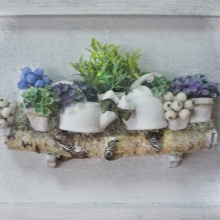
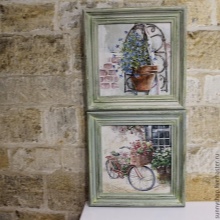
Classic
In the old days, not everyone was rich, but in the past centuries only very wealthy people really cared about the decor, so the classics are never poor. Her signature colors are gold and silver, which are most often combined, if not just with white, then with a bright red tone.
Plaster moldings, expensive forged metal parts, a large number of expensive woven scraps or mirrors - all these are elements that will only emphasize the wealth and aristocracy of the owner of the building.
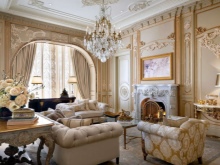
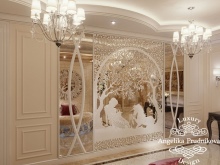
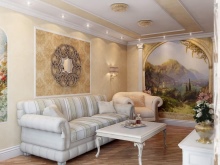
Country
Standard country is a kind of prosperous village, where there is an abundance of everything that you can do with your own hands. Accordingly, modern materials do not fit there in any way, but woven and knitted patches, wooden decor or ceramic elements will be quite appropriate.
Moderation in this case should not be observed, because country is a rich village life.
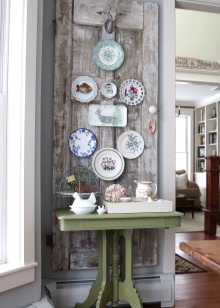
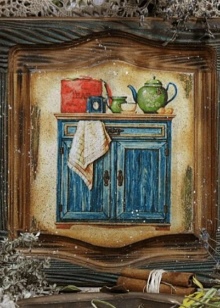
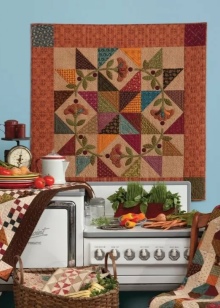
Loft
A good old loft imitates an attempt in harsh industrial conditions and in the absence of big money to create some kind of home comfort. Since the rest of the decor is responsible for the severity, the emphasis when choosing a panel is made precisely on the picturesque and non-standard, however, without the pursuit of inappropriate chic.
Picturesque old driftwood and drawings burnt on plywood, elements of metal technogenics or even urban photo wallpaper - all this is suitable for the implementation of the idea.


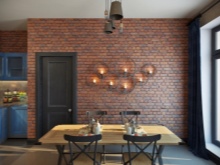
Shabby chic
This term is still not widely known, but in vain - the rooms designed in the shabby chic style are simply striking in their authenticity. You seem to be falling into the past! A panel that fits into such an interior should be created from materials that were at the disposal of any more or less wealthy mistress a hundred years ago. Then most of the jewelry was not factory-made, but was made by delicate female hands - from ribbons, beads, buttons, pieces of fabric.
An important point: all elements should be very light, not give the impression of monumentality.
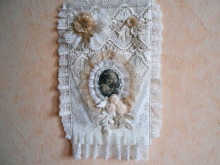
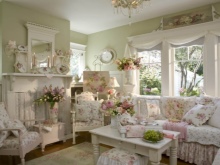

Eco style
Eco-friendly means made from natural materials, without newfangled harmful synthetics. For the rest, no one limits you anymore - use stones and branches, dry leaves and flowers, palm fibers, jute and so on.
Please note that all this should be handled minimally, in extreme cases - in "old-fashioned" ways.
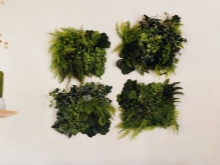
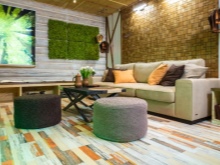

Steampunk
The name of the style translates to "steam trash" and that says it all. Put the maximum emphasis on technogenics, using metal and glass in the form of some kind of equipment, and you can dilute them with natural stone or leather. All dials and gears are welcome.
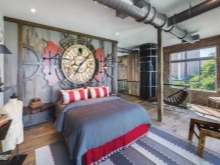
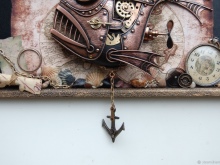
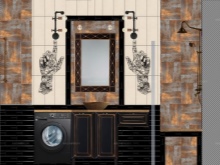
Plots
When deciding on the theme of the panel, it is important to build on both the preferences of the owner of the room and the general mood that it can create. For example, in the living room of the owner, who loves to indulge in thought, it will be very colorful to beat the theme of the seasons. At the same time, at first glance, each element of the panel does not carry a deep meaning, but together you get a holistic idea - a winter snowman made of cotton wool, a spring twig with buds, summer dried flowers and autumn yellow leaves.
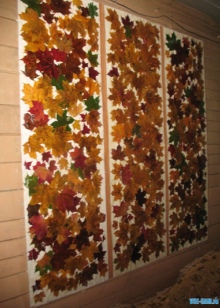

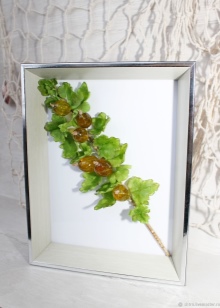
In the office, the world map looks great, carved right in a piece of wood - this is both stylish and informative to some extent. An owl will look sensible in the library - no matter what it is made of, it still remains a symbol of wisdom.

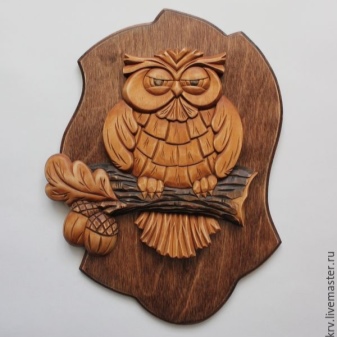
Typically female subjects very often revolve around paintings of natural origin. Women usually do not need harsh technogenics, but they will appreciate the panels with animals or birds. At the same time, of course, it is worth making a discount on where the decoration is located - the same roses, for example, are relevant for the living room, and in the kitchen the panel should be either "edible" or made from the freshest materials. If the hostess of the room combines sophistication and dedication in self-improvement, a ballerina may be very appropriate.
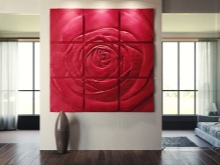
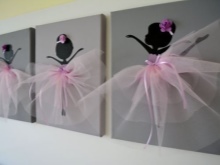

If you make a panel from inexpensive scrap materials yourself, then you can even aim at short-lived seasonal themes. In our country, it is customary to decorate a house for the New Year - so the panel may well be assembled for this very reason, especially if all the components after the holidays can be carefully disassembled and hidden until next time. The central element may well be a picture with bullfinches painted on it, and it can be “continued” with cotton-wool snow and a Christmas tree made from real needles and cones.
By the same principle, you can make an Easter panel, where part of the composition will be shown on the canvas, and everything else will lie in front of it.
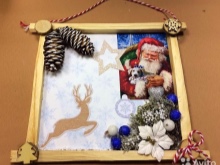
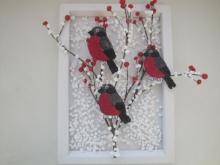

Where to place?
The panel as an element of decor is remarkable in that it is suitable for decorating any room. Nevertheless, There are some rules to help you position your composition so that it adds flavor to the design, rather than looking like the fifth wheel of a cart.
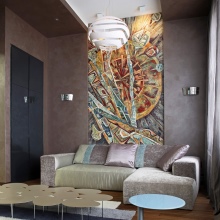
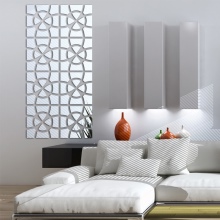
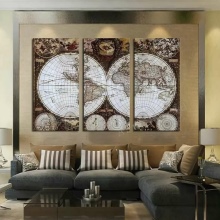
Here are some tips to help you get it right.
- Never forget that the panel should overlap with the rest of the interior elements. Of course, it is the main accent on the scale of the room, but it makes sense to choose it according to materials, colors and even texture so that objects that are similar in a certain characteristic are somewhere in the field of view all the time.
Thanks to this, the design of the room, while remaining varied, at the same time looks holistic.

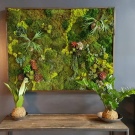
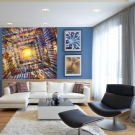
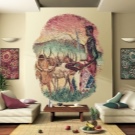

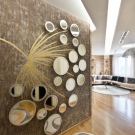
- The accent, which in this case is the panel, is never hidden. Nothing should block or distract from the view of such decor. Even if the decoration itself is smaller than a whole wall, it is better that no furniture stands near it, and ordinary paintings should also be hung somewhere else, otherwise they will interfere with perception.
If you have a lot of furniture, and you cannot free a single wall, but you really want to start the panel, consider options for placing it on the floor or ceiling, but with the same conditions - nothing should block the view.
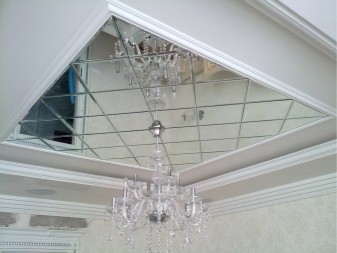
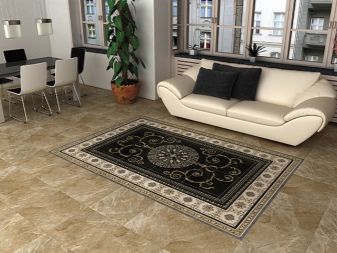
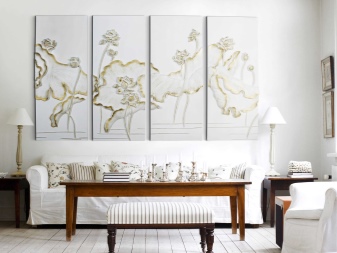
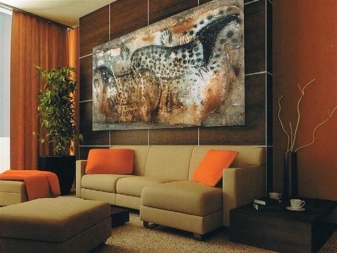
- Be sure to tie the plot of the panel to the role that this room plays in your house. In the bedroom, it is customary to get rid of all unnecessary thoughts and relax calmly, therefore, the simplest geometric shapes often appear above the bed. Children will not really appreciate the aesthetics of geometry, so it is worth choosing something for the nursery. In the bathroom, it is important to remember that not only the plot must be marine, but also the material itself, otherwise your work of art will not last long under the destructive effects of water and steam.
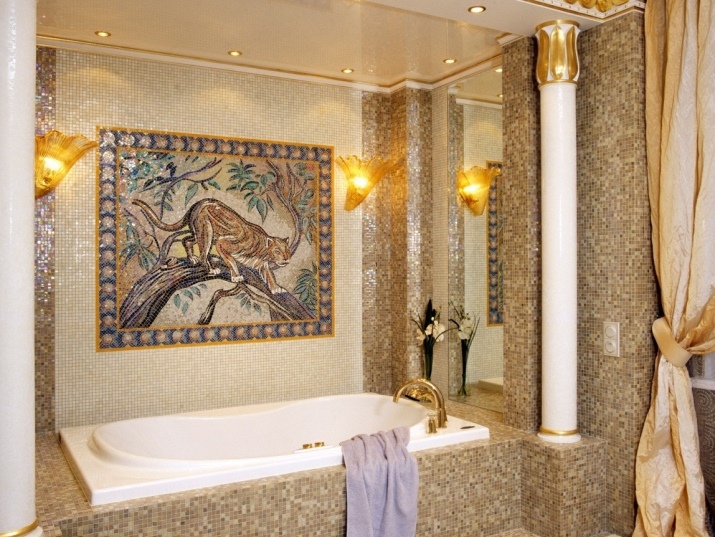
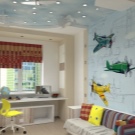
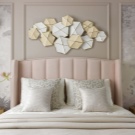
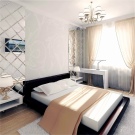
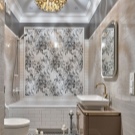

Beautiful examples
The panel is an art of a visual nature, which means that it is pointless to talk about such decorations without having concrete examples before our eyes. The first photo shows a sample of how beautifully you can beat an ordinary bunch of meadow flowers. Such an installation captivates with its freshness and three-dimensionality, gives a real feeling of May. The aesthetic effect of the background is achieved by the fabric, which is specially fixed on a wooden frame with folds.
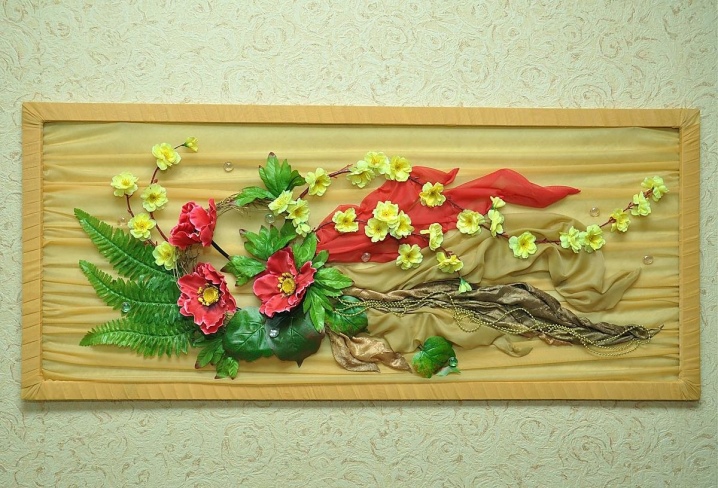
The second work is a model not only of good imagination, but also of decent perseverance. The composition also turned out to be very warm and indescribably summer, and even the fact that there are no natural materials in the composition of the craft did not prevent it. Flowers are crocheted of threads using macrame technique, and butterflies are skillfully assembled from a large number of small beads. At the same time, the author set his craft into a frame in order to draw an analogy with a painting, but the panel in this case is three-dimensional, creating the effect of presence.
Such an extremely homemade craft fits into any style like country or related to it.
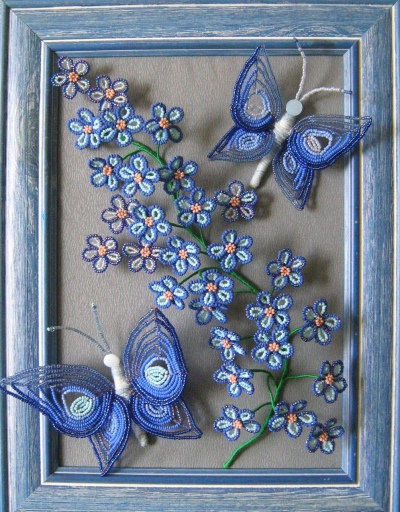
The third example clearly shows that collecting sea pebbles is not always a meaningless pastime. A similar result is possible only thanks to a subtle artistic instinct - the creator had to first clearly imagine the result, and then select hundreds of pebbles so that each of them would fall into place both in size and in shade. To create such crafts, you need to be a fan of your craft, but you can also admire the result endlessly.

In the end, nothing prevents you from using several different materials at once within the same decoration in order to maximize the uniqueness of your creation.
The fourth craft is interesting by the use of such an unusual material in the production of panels as leather. - the lowest piece of earth and the crowns of trees are definitely made of it. The rest of the elements will make the viewer puzzle over what they are made of, but this is even more interesting.
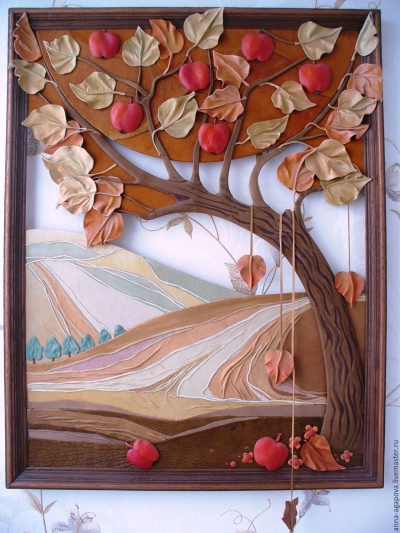













The comment was sent successfully.